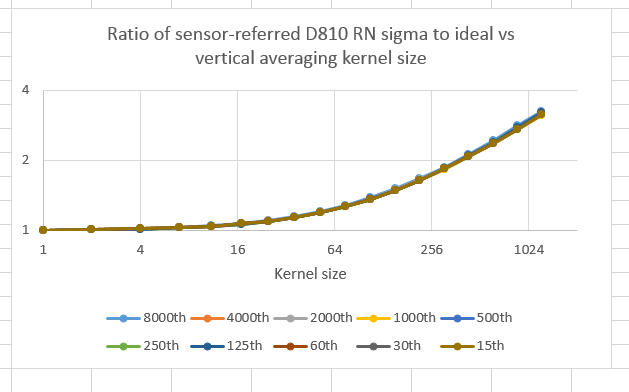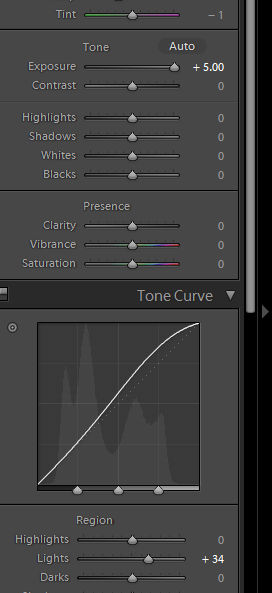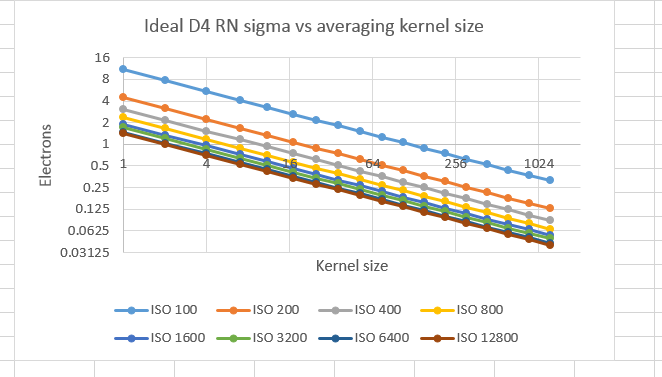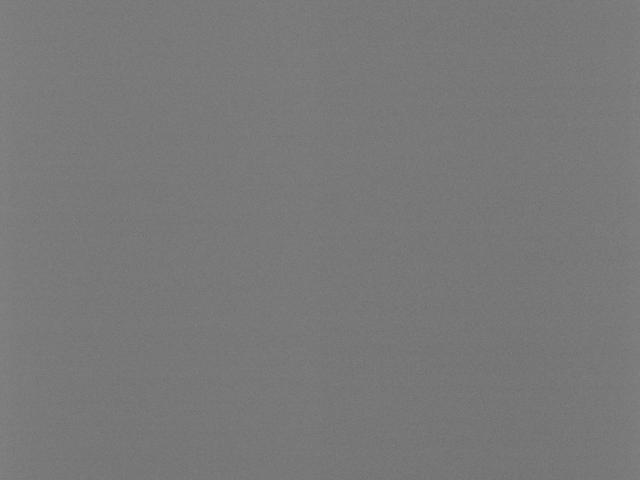There’s an assumption buried in the protocol for the experiment that led to yesterday’s post: that the read noise of the D810 doesn’t change character over the range of shutter speeds employed in the testing, which were from 1/60 (used to get the histogram that let us estimate the electron counts), and 1/8000 (the highest… [Read More]
Archives for November 2014
Nikon D810 read noise in images
Over the past two weeks, I’ve done a series of read noise analyses on an exhausting, if not exhaustive, ground of cameras. I’ve done to build up a data base for correlating visible read noise phenomena with measurements. Today I’d like to start looking at read noise in photographs. Before I do this, I’d like… [Read More]
Nikon D4 dark-field images
These are samples from the images used to create the curves in the previous post. ISO 100, no filtering: With 25 pixel kernels: With 152-pixel kernels: I don’t normally present the intermediate-ISO images, but I’m making an exception in this case for ISO 400, since it showed anomalous results in the curves of he… [Read More]
Nikon D4 read noise analysis
Here are the read noise vs one-dimensional low pass filter size curves for the whole-f-stop ISOs of the Nikon D4. Unfortunately, the D4 chops off the left side of the histogram for dark-field images in its in-camera raw processing: Here they are referred to the sensor: You can see that, up until about ISO 800,… [Read More]
Leica M9 dark field images
Here are the images from the preceding post. As usual in this read noise analysis series, they have been scaled into the range [0,1], have had a gamma curve of 2.2 applied , been res’d down to 640×480, and JPEG’d. ISO 160, no filtering: Note the commendable lack of hot pixels. I wonder if that’s… [Read More]



